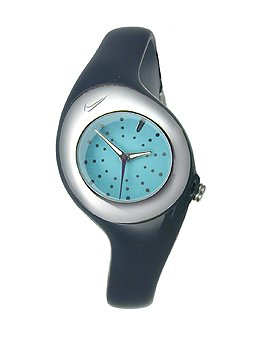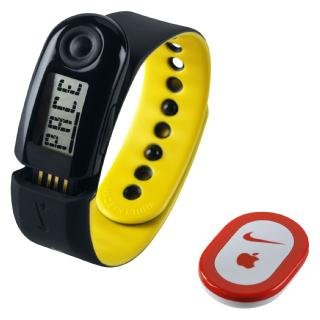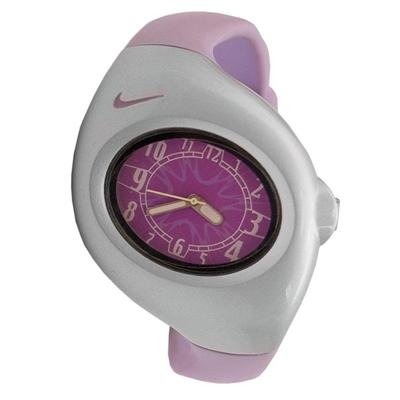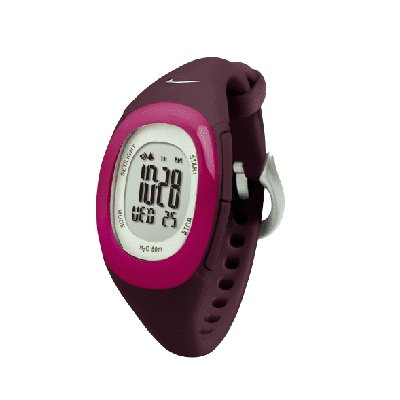Nike Children's Triax Sweeper Sport Watch, Blue Plastic Cut-Out Strap, Blue and Silver Case&Bezel, Blue Dial, WK0004411


Nike Children's Triax Sweeper Sport Watch, Blue Plastic Cut-Out Strap, Blue and Silver Case&Bezel, Blue Dial, WK0004411 Feature
- Nike Kids' WK0004-411 Triax Sweeper Blue Plastic Watch
Read more
Nike Children's Triax Sweeper Sport Watch, Blue Plastic Cut-Out Strap, Blue and Silver Case&Bezel, Blue Dial, WK0004411 Overview
Nike Children's Triax Sweeper Sport Watch, Blue Plastic Cut-Out Strap, Blue and Silver Case;Bezel, Blue Dial, WK0004411
Read more
Review Rating : 
Brand : Nike
List Price :
Special Prices : Check Special Offers 
Availibility : Usually ships in 4-5 business days

Advertising Disclosures
CERTAIN CONTENT THAT APPEARS ON THIS SITE COMES FROM AMAZON SERVICES LLC. THIS CONTENT IS PROVIDED ‘AS IS’ AND IS SUBJECT TO CHANGE OR REMOVAL AT ANY TIME.
Amazon, the Amazon logo, Endless, and the Endless logo are trademarks of Amazon.com, Inc. or its affiliates.
This page is a participant in the Amazon Services LLC Associates Program, an affiliate advertising program designed to provide a means for sites to earn advertising fees by advertising and linking to amazon.com.
Apr 09, 2012 18:20:04
Tag: Nike Children's Triax Sweeper Sport Watch, Blue Plastic Cut-Out Strap, Blue and Silver Case&Bezel, Blue Dial, WK0004411,Nike,Nike Children's Triax Sweeper Sport Watch, Blue Plastic Cut-Out Strap, Blue and Silver Case&Bezel, Blue Dial, WK0004411
Football Boots: Earliest Recorded - King Henry VIII in 1526
King Henry VIII's football boots were listed within the Great Wardrobe of 1526, a shopping list of the day. They were made by his personal shoemaker Cornelius Johnson in 1525, at a cost of 4 shillings, the equivalent of £100 in today's money. Little is known about them, as there is no surviving example, but the royal football boots are known to have been made of strong leather, ankle high and heavier than the normal shoe of the day.
Nike
Football Boots - The 1800's
Moving forward 300 years saw football developing and gaining popularity throughout Britain, but still remaining as an unstructured and informal pastime, with teams representing local factories and villages in a burgeoning industrial nation. Players would wear their hard, leather work boots, which were long laced and steel toe-capped as the first football boots. These football boots would also have metal studs or tacks hammered into them to increase ground grip and stability.
As laws become integrated into the game in the late 1800's, so saw the first shift in football boots to a slipper (or soccus) style shoe, with players of the same team starting to wear the same boots for the first time. Laws also allowed for studs, which had to be rounded. These leather studs, also known as cleats, were hammered into the early football boots, which for the first time moved away from the earlier favoured work boots. These football boots weighed 500g and were made of thick, hard leather going up the ankle for increased protection. The football boots would double in weight when wet and had six studs in the sole. The football boot had arrived...
Football Boots - The 1900's to 1940's
Football boot styles remained relatively constant throughout the 1900's up to the end of the second world war. The most significant events in the football boot world in the first part of the twentieth century were the formation of several football boot producers who are still making football boots today, including Gola (1905), Valsport (1920) and Danish football boot maker Hummel (1923).
Over in Germany, Dassler brothers Adolf and Rudolf formed the Gebrüder Dassler Schuhfabrik (Dassler Brothers Shoe Factory) in Herzogenaurach in 1924 and began producing football boots in 1925 which had 6 or 7 replaceable, nailed studs, which could be changed according to the weather conditions of play.
Football Boots - The 1940's to 1960's
Football boot styles shifted significantly after the end of the second world war, as air travel became cheaper and more international fixtures were played. This saw the lighter, more flexible football boot being worn by the South Americans being thrust onto the world stage, and their ball skills and technical ability amazed all those that watched them. Football boot production shifted to producing a lighter football boot with the focus on kicking and controlling the ball rather than simply producing a piece of protective footwear.
1948 saw the formation of the Adidas company by Adolf (Adi) Dassler after a falling out with his brother that was to form the cornerstone of football boot maker rivalry for the preceding years up to today. Brother Rudolf founded the beginnings of the Puma company in 1948, quickly producing the Puma Atom football boot. This led to interchangeable screw in studs made of plastic or rubber for the first time, reputedly by Puma in the early 1950's but the honour is also claimed by Adidas (Read the Story on Footy-Boots). Football boots of the time were still over the ankle, but were now being made of a mixture of synthetic materials and leather, producing and even lighter shoe for the players of the day to display their skills with.
Football Boots - The 1960's
The technological developments of the sixties bought a momentous step-change in design which saw the lower cut design introduced for the first time in football history. This change allowed players to move faster and saw the likes of Pele wearing Puma football boots in the 1962 World Cup Finals. Adidas, though, quickly emerged as the market leader, a position it claims until the present day. In the World Cup Finals of 1966, an astonishing 75% of players wore the Adidas football boot.
The 1960's also saw several other football boot makers joining the market with their own brands and styling including Mitre (1960), Joma (1965) and Asics (1964).
Football Boots - The 1970's
The seventies began with the iconic 1970 World Cup Finals which saw a sublime Brazilian team lift the trophy with Pele again at the helm, this time wearing the Puma King football boot. The decade itself will be remembered for the way in which football boot sponsorship took off, where players were being paid to wear only one brand. In terms of design and style, technological advancements produced lighter boots, and a variety of colours, including for the first time, the all-white football boot.
In 1979, Adidas produced the world's best selling football boot the Copa Mundial, built of kangaroo leather and built for speed and versatility. Although Adidas remained dominant, several other football boot makers joined the fray including Italian football boot maker Diadora (1977).
Football Boots - The 1980's
The greatest development of recent times in the design and technology of football boots was developed in the eighties by former player Craig Johnston, who created the Predator football boot, which was eventually released by Adidas in the 1990's. Johnston designed the Predator to provide greater traction between football boot and the ball, and football boot and the ground. The design allowed for greater surface areas to come into contact with the ball when being hit by the football boot, with a series of power and swerve zones within the striking area allowing the player to create greater power and swerve when hitting the "sweet spots". The eighties also saw football boots for the first time being made by English company Umbro (1985), Italy's Lotto and Spain's Kelme (1982).
Football Boots - 1990's
1994 saw Adidas release the Craig Johnston designed Predator with its revolutionary design, styling and technology making it an instant and lasting success. The Predator by now featured polymer extrusion technologies and materials allowing for a more flexible sole as well as the conventional studs being replaced by a bladed design covering the sole, giving a more stable base for the player. In 1995 Adidas released their bladed outsole traxion technology which are tapered shaped blades. Puma hit back in 1996 with a foam-free midsole football boot, known as Puma Cell Technology, to which Adidas responded again, this time with wedge shaped studs in the same year. The nineties saw new football boot producers Mizuno release their Mizuno Wave in 1997. Other new football boots came from Reebok (1992) and Uhlsport (1993) with other companies also joining the ever increasing, lucrative and competitive market place. Most significantly the nineties saw the entry of Nike, the world's biggest sportswear producer, immediately making an impact with its Nike Mercurial soccer boot (1998), weighing in at just 200g.
Football Boots - 2000+
As technology advanced still further, the application of the new research and developments were seen in the years into the new millennium right up to the present day and this has led to a reinforcement of the market positions of the big three football boot makers and sellers, Puma, Nike and Adidas (incorporating Reebok since 2006). Fortunately, there still remains room in the market place for the smaller producer that does not have the big money endorsement contracts at its disposal, such as Mizuno, Diadora, Lotto, Hummel and Nomis.
Recent developments since 2000 have seen the Nomis Wet control technology producing a sticky boot (2002), the Craig Johnston Pig Boot (2003), shark technology by Kelme (2006) and the exceptional design of the Lotto Zhero Gravity laceless football boots (2006) all of which underpin the successes that these smaller makers can achieve by producing specialised and technologically advanced football boots that provide a distinct differentiation from the mass produced products of the big three. Laser technology has also helped to produce the world's first fully customised football by Prior 2 Lever, which is perhaps the most exciting and innovative of the recent developments.
Current favourite football boots include Adidas' F50, Tunit and Predator; Nike's Mercurial Vapor III, Air Zoom Total 90s and Tiempo Ronaldinho, Reebok Pro Rage and Umbro X Boots.
Football Boots - The Future
As the debate rages with regards the lack of protection given by modern football boots, and the repercussion in terms of player injuries, there seems little to suggest that the major manufacturers are going to give up their quest for the lightest football boot for a more protective one. The proliferation of big money sponsorship deals, namely Nike Ronaldinho, Adidas with David Beckham and Reebok with Thierry Henry, has become a huge factor that drives the success and sales of a football boot maker, but is viewed as at a cost of injury and stagnation in football boot research and development. All we can predict for the future is integration with sensor technology, lighter and more powerful football boots and more outlandish designs and styles.
Football boots have travelled a long way since King Henry strutted onto the fields of England in the 1500's: the football boot has gone from an everyday protective apparel to a highly designed and cutting edge technological product which is a vital part of the player's equipment. Whatever the colour, the design, the style or the player - we love footy boots!
Football Boots (Soccer Cleats) The History
Footy-Boots.com

























